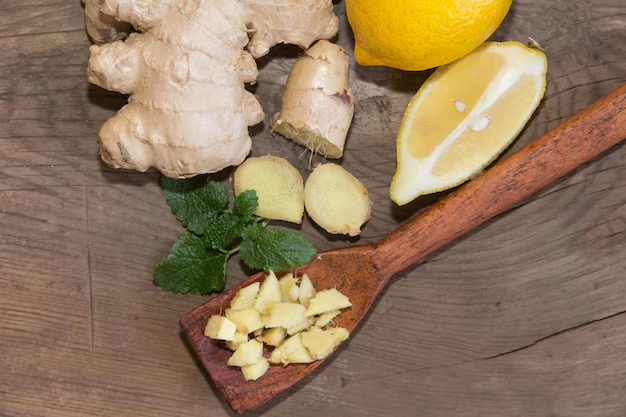Understanding Ginger Storage: How Long Does It Last in the Refrigerator?
Ginger, with its warm flavor and aromatic scent, is a powerhouse spice and ingredient in kitchens around the world. Whether you're an avid cook or someone who occasionally dabbles in culinary adventures, you've likely wondered about the shelf life of this pungent root. How long can you keep it in the refrigerator before it loses its flavor and freshness? This natural ingredient, beloved for its versatility, demands proper storage to retain its benefits. Let's delve into the best practices for ensuring your ginger remains fresh and usable for as long as possible.
🌟 How Long Does Ginger Last in the Refrigerator?
The lifespan of fresh ginger in the refrigerator can vary depending on its initial condition when you purchase it and how it’s stored afterward. Typically, fresh ginger can last about three to four weeks in the fridge when it is properly stored. However, several factors can influence this duration:
- Freshness at Purchase: The fresher the ginger when you buy it, the longer it will last. Look for firm, smooth skin and avoid pieces that are shriveled or have soft spots.
- Cut vs. Whole: Whole ginger will last longer than cut or peeled pieces.
- Storage Method: How you store your ginger greatly affects its lifespan, with methods ranging from refrigeration in a plastic bag to submerging in liquid solutions.
🥄 Best Practices for Storing Ginger
Refrigerator Storage
- Plastic Bags: Wrap the ginger in a paper towel to absorb excess moisture, then place it in a resealable plastic bag with the air removed. This minimizes exposure to air and moisture, both of which can hasten deterioration.
- Airtight Containers: Using airtight containers also helps keep ginger fresh by maintaining a stable humidity level and reducing air contact.
- Sliced or Grated Ginger: If you need to store sliced or grated ginger, use airtight containers or resealable bags and store them in the fridge. This method is excellent for extending the freshness by up to a week beyond whole storage.
Alternative Storage Methods
- Freezing: Ginger can be frozen to extend its life significantly. Peel and cut the ginger into usable sizes before placing it in airtight freezer bags or containers. Frozen ginger can maintain quality for up to six months.
- Pickling: Another method for longer preservation is pickling, which can make your ginger last several months. This is ideal for those who enjoy the tangy taste it imparts.
- Storing in Alcohol: Submerging peeled ginger in alcohol like vodka can also help preserve it for extended periods, acting as both a preservative and an infusion for the beverage.
🔍 Identifying Fresh Ginger
Recognizing fresh ginger is the first step to effective storage. When buying:
- Firmness: Fresh ginger should feel firm and heavy, not limp or lightweight.
- Color: The skin should be thin and shiny, with a golden tan color. Avoid pieces with dark spots or mold.
- Smell: Fresh ginger should have a strong, spicy aroma. Dull or muted scents may indicate it's past its prime.
⏳ Recognizing Spoilage
Understanding when ginger has gone bad is crucial to prevent any off-putting flavors in your dishes:
- Texture: Spoiled ginger often feels slimy or mushy to the touch.
- Appearance: Mold growth or rot is a clear indicator it's time to discard.
- Smell: An off or sour smell means the ginger is no longer fresh.
🎯 Summary of Ginger Storage Tips
Here’s a concise overview to help you remember key storage tips:
- 🌿 Fresh Whole Ginger: Lasts 3 to 4 weeks in the refrigerator
- 🔪 Sliced/Grated Ginger: Best used within a week, keep in airtight containers
- 🧊 Freezing: Peel and chop for long-term storage, lasts up to 6 months
- 🌡️ Airtight Storage: Minimizes moisture, retains freshness
- 🚫 Signs of Spoilage: Mold, mushiness, and sour smell mean it’s time to toss
🥘 Cooking and Culinary Uses of Ginger
Ginger works wonders beyond just being a spice. Here are some typical uses that highlight its versatility:
- Tea: Fresh ginger tea is warming and helps soothe throats.
- Curries and Soups: Its spicy kick complements savory dishes.
- Baked Goods: Used in gingerbread and other sweet treats.
- Stir-fries: Adds zest to vegetables and meats alike.
🧐 Beyond Fresh: More Ginger Forms
In addition to fresh ginger, consider these forms for added convenience:
- Ginger Powder: Great for baking and seasoning, though it offers a different taste experience.
- Candied Ginger: A sweet snack or addition to desserts.
- Ginger Paste or Puree: Provides a uniform texture and integrates well into sauces and marinades.
🎐 Related Storage Considerations
Ensuring the longevity of ginger is just one aspect of kitchen storage. Similar practices can be applied to other root vegetables and spices:
- Garlic: Store whole in a cool, dark place; refrigerate peeled cloves in airtight containers.
- Turmeric: Fresh turmeric follows similar storage guidelines as ginger.
- Onions and Potatoes: Keep in a well-ventilated space but never together, to avoid early sprouting.
💡 Key Takeaways for Optimal Ginger Use
Use these strategies to maximize the freshness and flavor of your ginger:
- Buy Fresh: Begin with firm, aromatic ginger for the best results.
- Storage Methodology: Choose refrigeration, freezing, or pickling based on your usage frequency.
- Recognize Spoilage: Be vigilant about signs of spoilage to avoid cooking mishaps.
The journey of ginger from market shelf to your meal can be prolonged with careful attention and proper storage. Whether you're adding it to a boiling pot of tea or stirring it into your latest sauce experiment, keeping ginger fresh will ensure you're making the most of this essential ingredient's myriad culinary contributions. Enjoy the zest and warmth it brings to your kitchen efforts, all while reducing waste and enhancing your cooking experience.
